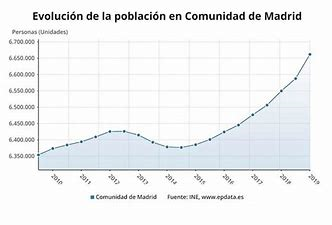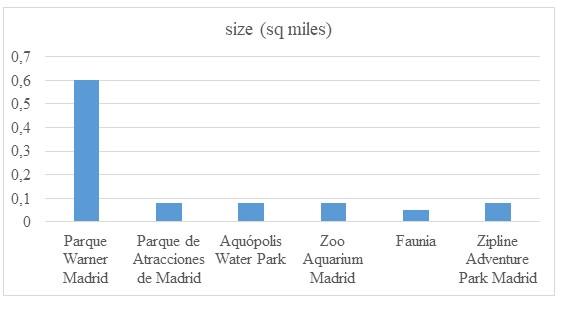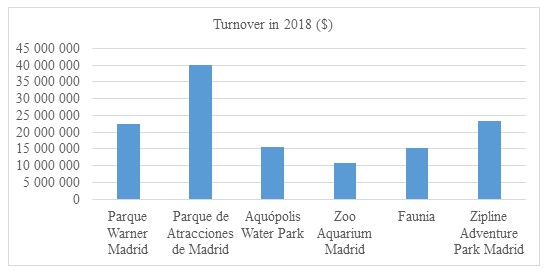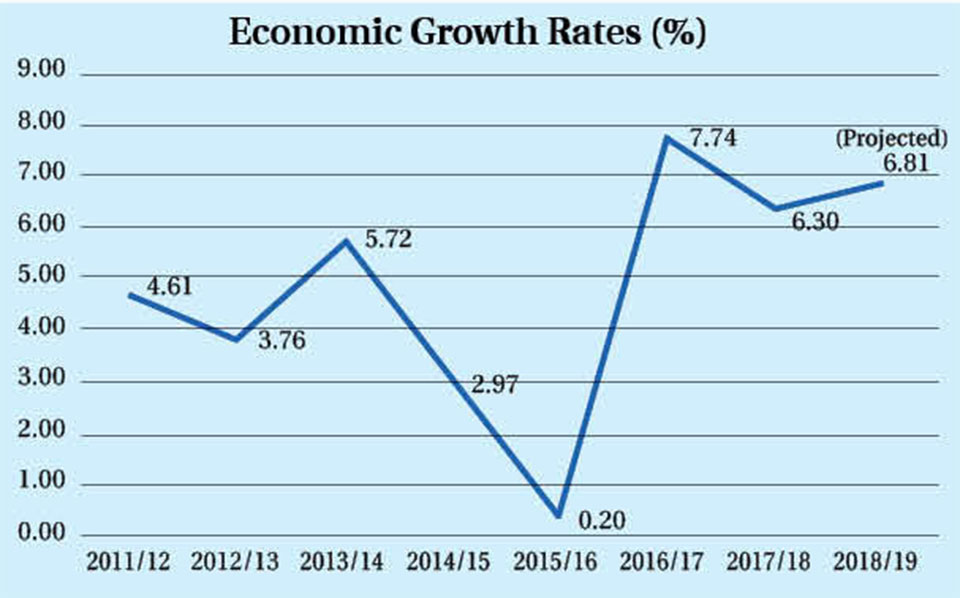Introduction
The American company, Walt Disney, is a dominant player in the global entertainment industry. The firm has a diversified portfolio that includes the production and distribution of animated films, theme parks, and cruise lines targeting tourists. Disney’s growth strategy entails intensive expansion into new, high-potential cities in Europe, South America, and Asia Pacific through projects based on the theme park concept. This paper analyzes Madrid, Spain, as a new, strategic location for the next Disney Euro Project in line with its international business goals.
Overview of the City
Madrid, Spain’s capital and most populous city, is home to the Spanish government and royal family. Regarding location, Madrid lies at the heart of the Iberian Peninsula, a region surrounded by natural parks and mountains that are a major tourist attraction. Madrid covers an area of about 149,000 acres in size (Prados 44). This metropolitan area encompasses small towns and settlements in the outskirts of the city. Table 1 shows the location, size, and population of Madrid, Spain. The population of Madrid has been steadily growing over the past decade and now stands at 3.2 million people (Madrid Council). Figure 1 shows the trends in population growth from 2010 to 2019.
Table 1: Description of Madrid
The Spaniard system of governance is a parliamentary monarchy, whereby the monarch serves as the official head of State while the Prime minister heads the government. Madrid hosts some international intergovernmental organizations, including the United Nations World Tourism Organization, and the Organization of Ibero-American States. Apart from being an economic center, Madrid is famous for its historic neighborhood characterized by landmarks, such as the Royal Palace and Plaza Mayor. These places attracted an average of 7.64 million tourists in 2019 alone (Madrid Council 7). These characteristics make Madrid suitable for the expansion of Disney into the European market.

Industry Overview
The theme park industry in Madrid is not as well developed as shopping stores and malls. It is home to only six theme parks, such as Parque de Atracciones de Madrid, which provide interactive amusement and roll-coaster experiences (Madrid Council 2). The city also hosts themed restaurants that target friends and families, theaters, nightclubs, and cinemas. The parks feature modern themes and magical shows to elicit excitement and thrills.
Key Industry Data

The industry comprises a diversified portfolio of themed parks and outdoor entertainment experiences. Madrid has six theme parks, namely, Paque Warner, Parque de Atracciones, Aquopolis Water Park, Zoo Aquarium, Faunia, and Zipline Adventure (Figure 2). They range in size from 0.05 to 0.6 square miles and feature differentiated products targeting different market segments (Madrid Council). The largest theme park is Parque Warner Madrid, while the smallest one is Faunia.

The theme park industry in Madrid is characterized by rapid growth and multiple competitors compared to other Spanish cities. The total turnover of the industry in 2018 was about $127.5 million (Madrid Council 11). The largest firms in terms of the number visitors and revenue include Parque de Atracciones de Madrid and Parque Warner Madrid (Figure 3) that offer thrilling rides, roller coasters, and dedicated television characters to visitors.
Culture
Madrid is one of the major cultural capitals of Europe, with several museums, numerous national theatres, galleries, and showrooms. Thus, the city has the capacity to satisfy the most challenging tourist expectations. In 2013, the European Regional Development Fund allocated a total of 33.5 million euros towards improvement of Madrid’s tourism and cultural programs (Madrid Council). Spain’s capital city is famous for its diverse annual festivals, such as the spring carnival that showcases the best Spanish art pieces, the Madrid international Dance, and performing arts festival for children.
Food is a huge factor of the Spanish culture; the streets in Madrid are usually lined with colorful restaurants serving famous cuisines in the country, such as tapas. Because Spaniards are not keen on having breakfast, a typical workday in Madrid will constitute a long lunch break coupled with a period of siesta (Madrid City). Madrid is the perfect representation of the blend between modern and ancient architecture, from the ruins of old Moorish mosques to small Gothic churches.
Economics
As the largest city in Spain, Madrid is also referred to as the economic hub, hosting several local and international companies. The average economic activity in Spain grew more than fifty times between the 19th and 21st century, at an aggregate cumulative rate of 2.4% per annum (Prados 25). An in-depth analysis of Spain’s expenditure and output components of the gross domestic product will provide valuable information about its economic determinants. Madrid’s gross domestic product (GDP) is estimated at $157.1 billion and contributes an average annual rate of 12% to the national financial wealth, which is represented by nearly $49,410 per capita (Prados 27). While this rate only represents the municipality, the greater Madrid region generates more towards the national GDP.
The city provides one of the largest labor markets across Europe due to its population distribution. In 2018, Madrid’s economy grew by an average or 3.1% and is estimated to increase by 2.8% and 2.9 % in subsequent years (Madrid Council 1). Economists estimate that this continuous growth will result in additional new job opportunities between 2018 and 2020. This phenomenon is set to reduce the unemployment rate of Madrid by 10.8% (Madrid Council). Figure 2 shows Madrid’s economic growth rates between 2011 and 2018.

Madrid leads the country in attracting foreign investments and international companies. In a span of 5 years, between 2013 and 2017, this autonomous region of Spain received an average of 51% foreign investments (Madrid Council 1). These direct investments have resulted in thousands of job opportunities within Madrid’s municipality and its surrounding regions. According to the ministry of economy, these jobs represent 28% of the total employment opportunity in Spain (Madrid Council 1). Numerous multi-nationals have established their headquarters in Madrid, enabling its residents and tourists to access various kinds of services provided by public and private sectors.
Legal and Political factors
Madrid’s legal environment is similar to most European cities; its strict data protection and copyright laws are notable. With its high rate of bureaucracy, investing in Madrid as either a local or foreigner requires numerous legal commitments. Recently, the city placed a cap on the average working hours of employees, with maximum allowable working time being 40 hours a week (Madrid Council). Indirect or direct discrimination based on race, social status, disability, religion, and ethnicity are forbidden under the law, and employees are entitled to protection against social injustices in the workplace.
Spain’s political system is a combination of a parliamentary democracy headed by a prime minister and a constitutional monarch. Both the royal palace and the parliament are located in Madrid, the capital city and one of the country’s 17 autonomous states (Madrid City). As an independent constituency, Madrid has an elected regional parliament with a fully functional cabinet. The division of power in Madrid, similar to all autonomous regions, is subdivided into the legislature, government, and the supreme court of justice. The legislative power is organized into two chambers: the House of Representatives or congress and the senate that is in charge of making laws pertaining their regions. The executive is responsible for ensuring laws are implemented and appointing ministers that make up the cabinet. As a whole, Spain most notable political influence is its membership within the European Union. However, the country’s high fiscal deficit within the past decade has resulted in a huge sovereign debt.
Competition
Madrid is home to numerous amusement parks, such as Parque de Atracciones, Absimo, the walking dead experience, and Sould Park. Disney World’s venture into the Madrid entertainment scene will encounter a lot of competition, especially from the biggest and largest theme park, the Parque Warner. Located in the southeast part of the city, this theme park consists of 42 rides and 6 roller coasters spanning over an area of 150 hectares (Madrid Council). Parque warner is subdivided into five themed areas, including Hollywood Boulevard, DC superhero world, old west territory, cartoon village, and Warner Bros studios. This famous park also houses a water park with an artificial beach.
Strategic Orientation
The availability of numerous amusement parks across Madrid will pose as a challenge for Disney’s penetration into this industry. To compete effectively in this new market, Disney World will be required to invest heavily in marketing and advertisement. The company can use different marketing strategies, such as naming their roller coaster rides and other attractions after their famous movie productions, for instance, frozen, tangled, toy story, and Mulan (Madrid Council). Due to the huge appeal these movies have on children, the acceptance rate of Disney’s amusement park in Madrid might be high.
Trade Barriers
Economic barriers within Spain are instituted by the federal government and apply to all autonomous regions including Madrid. While import and export tariffs are not applicable between European countries, third-party countries are expected to pay the European Union’s common external tariff. During the 2007 trade summit aimed at establishing a Transatlantic Economic Council, the European Union and the United States agreed to participate in Trade Corporation within a regulatory framework (Madrid City). Before establishing any business in Madrid, proper documentation is required, such as licensing and certifications pertaining to the health and safety of the working environment.
Labor Relations
Labor laws in Madrid are used to regulate working hours, rest periods, annual leave, public holidays, and overtime. Full-time employees are required to work a maximum of 40 hours weekly, while working duration for personnel under the age of eighteen is limited to eight hours a day, as stipulated under the 8th royal decree of 2019 (Global Legal Insights 1). Regarding employment contracts, they can be either verbal or written, but the former is quite uncommon. Employers are required to submit signed contracts to the Public State Employment Service within days of engagement. The different types of contracts available in the Spanish workforce include training, work experience, part-time or full-time, and in-office or remote employment agreements.
The 2019 equality plan passed by the government decrees that companies that have employed more people should institute an orderly set of measures that are aimed at removing obstacles to the equal treatment of male and female personnel. Another labor law, the royal decree 6 of 2019, which is called the adaptation of the working day, is used to help employees reconcile their work and family life (Global Legal Insights 1). This statute allows employees with children to request an adaptation of their working hours due to reasons, such as childcare. The latest labor law to be instituted was under the ruling of the National High Court, which stated that pauses taken during working hours, such as coffee or smoking breaks, should be deducted from total hours worked (Prados 71). In this case, the employer has the right to reduce the employee’s salary. This ruling was aimed at making the workforce accountable for the time spent doing actual work.
Geography
Madrid’s physical location is strategic for the Disney Euro Project. The city lies at the center of the Iberian Peninsula, 40° 25′ 0.3900” N (Madrid City). Surrounded by a series of small mountains, Madrid has a high-altitude area. The climatic conditions of Madrid are classified as Mediterranean due to its high altitude winters characterized by periodic snowfall with the minimum temperature falling below zero degrees Celsius (Madrid City). Summers in Madrid are hot, with an average temperature of 30 degrees. Because of the high altitude base and dry climate, summer nights are relatively cooler. The city’s municipal boundaries encompass an area of 377 square miles, while the autonomous region of Madrid consists of 178 municipalities occupying a region of nearly 4971 square miles (Madrid City). Its excellent transport links, roads, and rail facilitate movement between municipalities very efficient, while the numerous museums and parks maintained by the city’s tourism board have made it an ideal tourist destination.
Conclusion
Madrid provides a strategic location for the expansion of Disney World into the European market. With its geographic location, friendly climate all year round, steady population growth, fast and efficient transport links, and a constant stream of tourists, the city’s economic growth and projections show a lot of potential. Culturally, Madrid is one the most diverse cities in Europe, with a long list of national museums, theatres, historical sites. Being the largest and most populous city in Spain, Madrid is also the country’s economic powerhouse, with a significant contribution to the national GDP. The city also boasts of a large foreign investment over the past couple of years, providing numerous job opportunities to locals. Disney’s entry into the market will face competition from Parque Warner, Madrid’s bureaucracy, numerous legal requirements, and political interference. However, Madrid’s labor laws are employer-oriented such that the law protects the rights and privileges of both workers and employers.
Works Cited
Global Legal Insights. “Employment and Labor laws 2020- Spain.”
Madrid City. “Madrid Geography.” Web.
Madrid Council. “Economy.” Madrid Investment Attraction.
Prados de la Escosura, Leandro. Spanish economic growth, 1850–2015. Springer Nature, 2017.